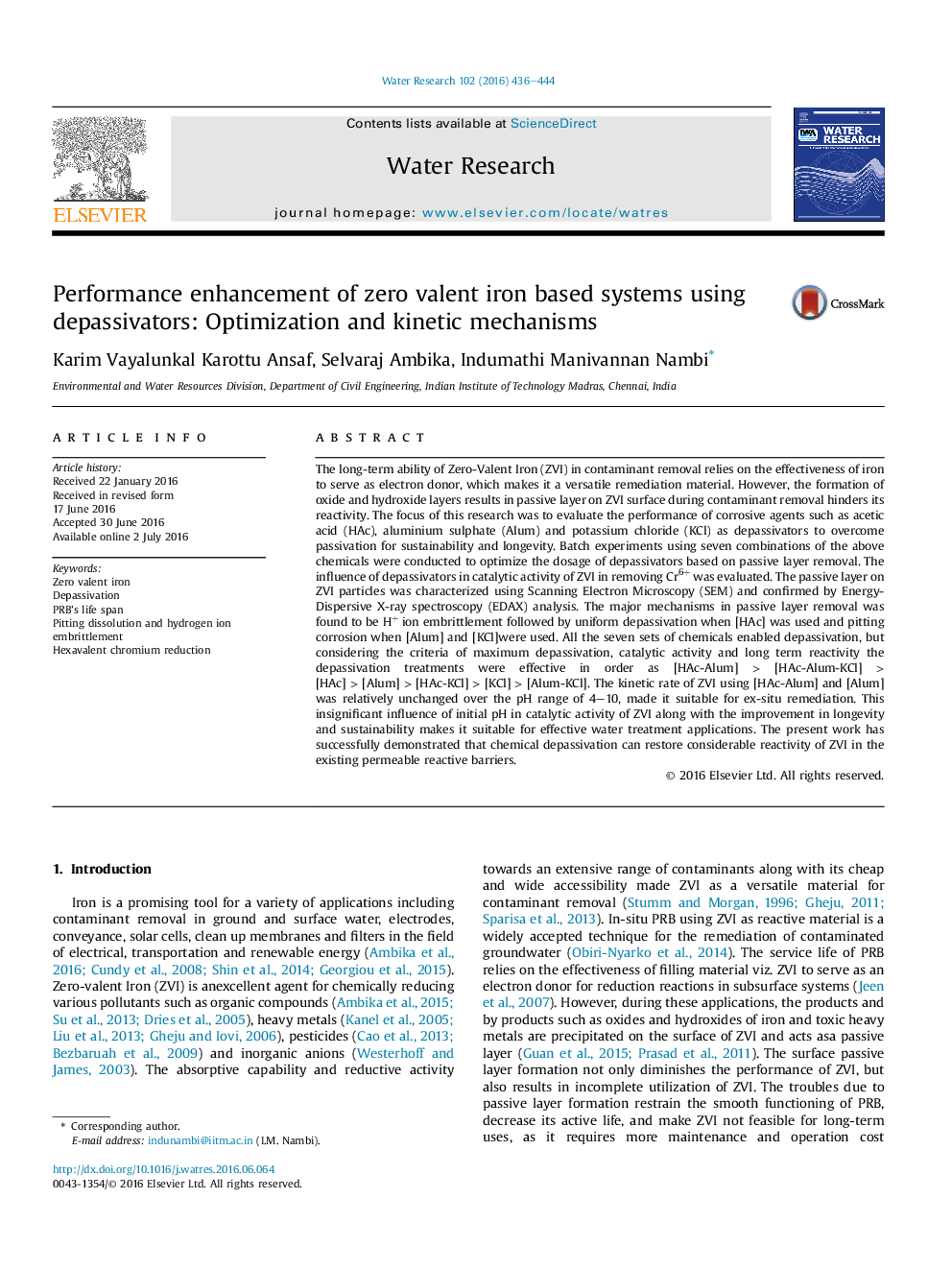| کد مقاله | کد نشریه | سال انتشار | مقاله انگلیسی | نسخه تمام متن |
|---|---|---|---|---|
| 4480874 | 1623066 | 2016 | 9 صفحه PDF | دانلود رایگان |
• Evaluation of acetic acid [HAc], Alum, KCl and combinations as ZVI depassivators.
• Achieved >5 folds reactivity, >4 folds reusability, <1% passivation with fresh ZVI.
• [HAc-Alum] performed the best depassivator in various criteria, apt for ex-situ systems.
• [HAc] doubled the reaction rates at low pH and recommended for in-situ ZVI systems.
• Restorated 60–80% activity of passivated ZVI, suitable for reviving inactive PRBs.
The long-term ability of Zero-Valent Iron (ZVI) in contaminant removal relies on the effectiveness of iron to serve as electron donor, which makes it a versatile remediation material. However, the formation of oxide and hydroxide layers results in passive layer on ZVI surface during contaminant removal hinders its reactivity. The focus of this research was to evaluate the performance of corrosive agents such as acetic acid (HAc), aluminium sulphate (Alum) and potassium chloride (KCl) as depassivators to overcome passivation for sustainability and longevity. Batch experiments using seven combinations of the above chemicals were conducted to optimize the dosage of depassivators based on passive layer removal. The influence of depassivators in catalytic activity of ZVI in removing Cr6+ was evaluated. The passive layer on ZVI particles was characterized using Scanning Electron Microscopy (SEM) and confirmed by Energy-Dispersive X-ray spectroscopy (EDAX) analysis. The major mechanisms in passive layer removal was found to be H+ ion embrittlement followed by uniform depassivation when [HAc] was used and pitting corrosion when [Alum] and [KCl]were used. All the seven sets of chemicals enabled depassivation, but considering the criteria of maximum depassivation, catalytic activity and long term reactivity the depassivation treatments were effective in order as [HAc-Alum] > [HAc-Alum-KCl] >[HAc] > [Alum] > [HAc-KCl] > [KCl] > [Alum-KCl]. The kinetic rate of ZVI using [HAc-Alum] and [Alum] was relatively unchanged over the pH range of 4–10, made it suitable for ex-situ remediation. This insignificant influence of initial pH in catalytic activity of ZVI along with the improvement in longevity and sustainability makes it suitable for effective water treatment applications. The present work has successfully demonstrated that chemical depassivation can restore considerable reactivity of ZVI in the existing permeable reactive barriers.
Figure optionsDownload high-quality image (292 K)Download as PowerPoint slide
Journal: Water Research - Volume 102, 1 October 2016, Pages 436–444
